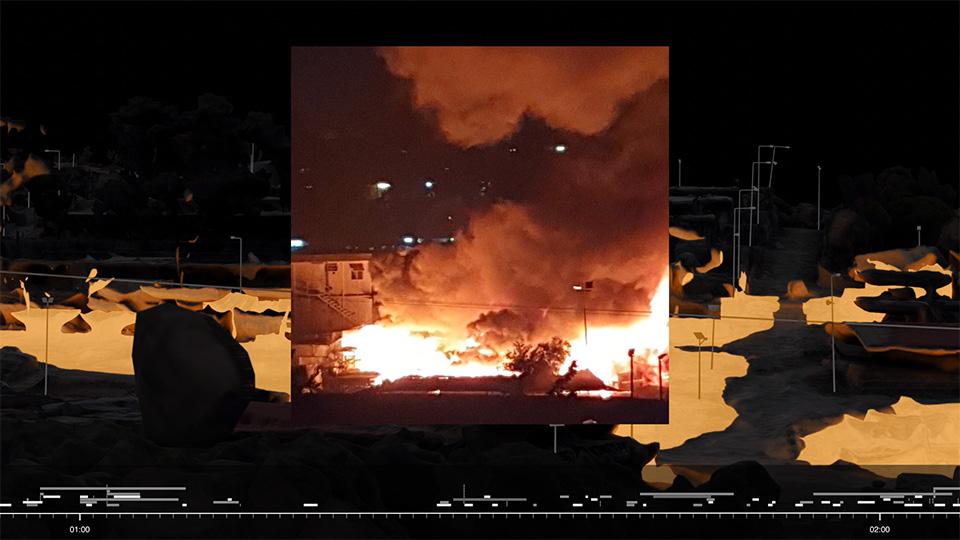New investigation casts doubt over Moria Fire arson convictions
Primary page content
An investigation by Goldsmiths Forensic Architecture team has refuted evidence that led to the conviction of young asylum seekers, accused of starting a fire in Moria Refugee Camp in Greece in 2020.

Forensic Architecture’s (FA) highly detailed reconstruction of the event cast doubt on the key witness statement, which led to the conviction of a group of young asylum seekers, known as ‘the Moria 6’, accused of starting the blaze on September 8 2020.
The investigation shows that “inhumane management of the camp” including conditions of enforced precarity and overcrowding, manufactured and maintained by Greek and EU policies for years, resulted in this fire, as well as over 200 outbreaks of fire in and around the camp since its establishment in 2013.
Police arrested ‘the Moria 6’ and accused them of arson shortly after the fire. They were convicted in two separate trials, which were widely heralded as a ‘parody of justice’, with five of the group convicted on the testimony of a single witness who never appeared in court.
Goldsmiths’ FA team, and sister organisation Forensis, were commissioned by Lawyers representing four of ‘the Moria 6’ defendants to reconstruct the fire and cross-examine the key witness statement, ahead of an appeal trial in Lesvos due to begin the week of March 6, 2023.
The investigation used satellite images, open source video and images and expert fire analysis to cast doubt on the grounds for the conviction of a group of young asylum seekers who were accused of starting the fire. The team examined hundreds of videos, images, testimonies, and official reports, and used high-resolution drone footage to create accurate 3D models of the camp capturing its state before and after the blaze.
Dimitra Andritsou, Forensis’ research coordinator, said: “The 8 September 2020 fire that destroyed the camp of Moria was not an isolated incident, but the last in a series of hundreds of fire outbreaks in the camp over the seven years of its operation. These recurring fires were the symptom and material manifestation of the violence exercised by contemporary borders against illegalised migrants – a violence that is articulated through an intricate nexus of neglect and enforced precarity.
“Our analysis of the outbreak, based on the examination of hundreds of videos and images that night, shows that the young asylum seekers accused of starting the fire were summarily arrested on the basis of weak and contradictory evidence, suggesting that the EU’s and Greek government’s inhumane management of the camp required a scapegoat for a disaster that was designed to happen.”
Α large part of the audio-visual material that was analysed consisted of footage shot by young migrants, students of ReFOCUS Media Labs, an organisation training refugees on the island in filmmaking and reporting techniques. This allowed for a detailed spatiotemporal reconstruction of the spread of the fire through the camp, revealing significant inconsistencies within the testimony of the key witness and casting further doubt on the evidence that formed the basis for the young asylum seekers’ conviction.
Stefanos Levidis, FA/Forensis’ lead researcher on border violence and migration, said: “Our investigation lays bare the structural failings of the EU’s ever-expanding carceral archipelago in the Aegean, and those of the operational and juridical infrastructure assembled to enforce it. Drawing mainly from evidence produced by asylum seekers recording their itinerant possessions going up in flames, this detailed digital reconstruction of the fire scrapes the ashes of Moria in search of justice, memory, and accountability.”
More information on the investigation into the fire in the Moria Refugee Camp fire is available on the Forensic Architecture website.
Photo Credit Forensic Architecture/ Forensis, 2023